Under the cover of night, with his path lit only by a full moon, Michael Pietroiacovo searched for hours in the hills of Molise, Italy for a rare luxury, a commodity likened to precious jewels. But what Pietroiacovo hunted was far more delicate, and it would be only days before it would become worthless. He was searching for truffles.
After scouring the earth for almost six hours in near darkness for the telltale signs of truffles, rain began pouring down on him and his pointer dog, Tufo. At that moment Tufo began jumping and barking. “The dog went crazy,” Pietroiacovo remembers.
The pair struck pay dirt. Pietroiacovo uncovered a kilo of winter white truffles, an amount he has yet to surpass with more than twenty years in the trade. By the time he was in his teens, and as a young man Pietroiacovo sold truffles under market value, using the proceeds to impress his friends by buying everyone pizza. Those first forays into the world of truffle hunting, however, would launch an empire for his siblings and extended family, and propel his career as a major supplier of the coveted fungus on the West Coast of the United States. That first successful venture also gave Pietroiacovo an early glimpse into the cut-throat environment of the truffle business—one into which he ultimately entered with his brother.
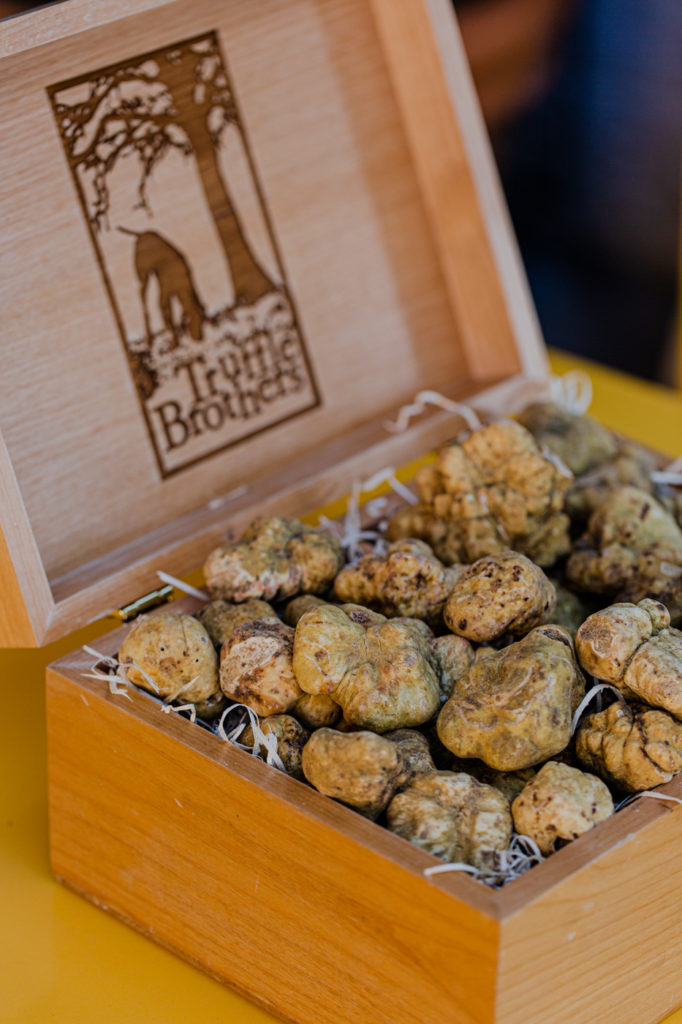

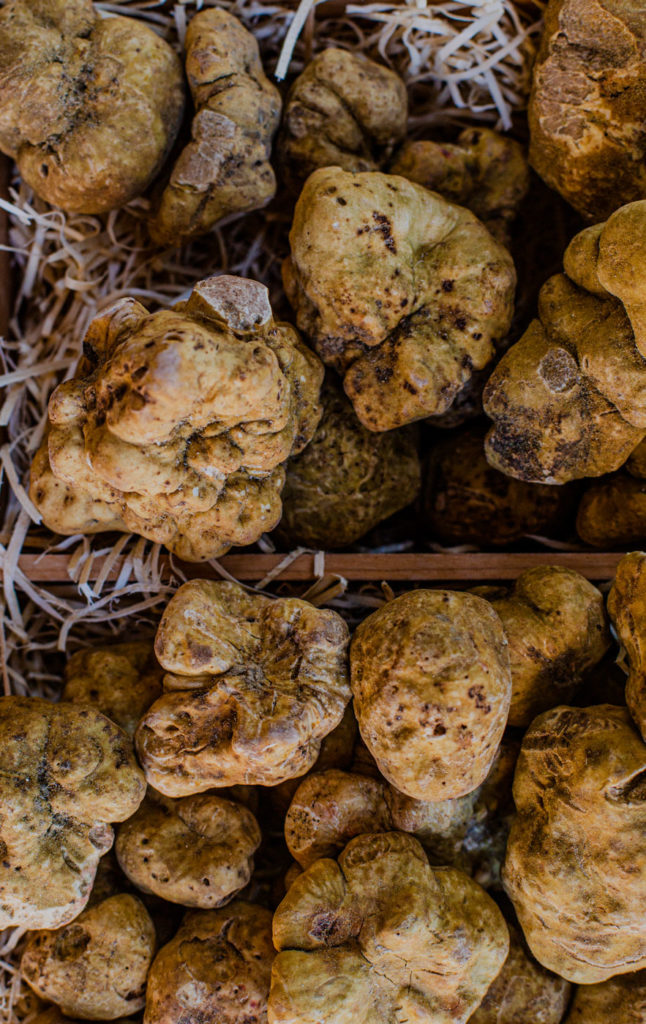
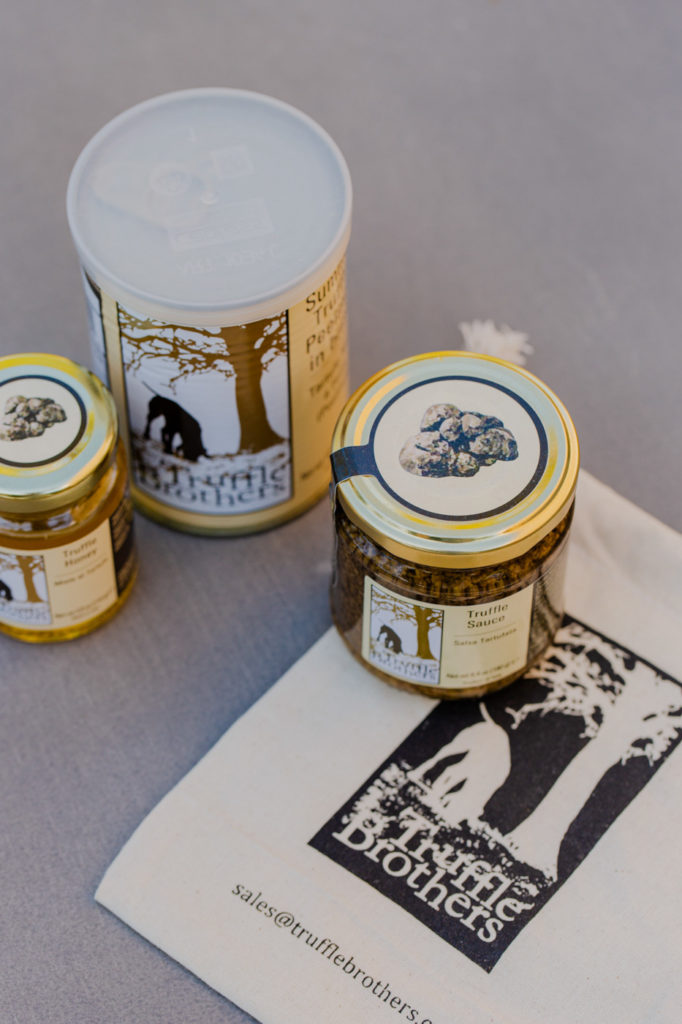
Few consumable items surpass truffles in signifying opulence. Flown from far reaches across the globe in a matter of days, shavings of the highly coveted ingredient are added to dishes at Michelin star restaurants. Their availability is limited to a few months, sometimes as little as six weeks, and their proliferation is highly dependant on weather. The mushrooms can’t be cultivated; they must be hunted. And acquiring this luxury good has come at a steep price, in the most extreme instances, even costing human life.
“Crime in the truffle industry is unexpected,” says Ryan Jacobs, author of The Truffle Underground: A Tale of Mystery, Mayhem, and Manipulation in the Shadowy Market of the World’s Most Expensive Fungus, which explores the underbelly of the truffle trade. “It’s something that strikes you as artisanal and luxurious, something you would never expect crime to have an entrypoint into,” Jacobs says.
Hunters have been known to sabotage one another by poisoning or kidnapping truffle-sniffing dogs. Documented instances of harming canines date back as far as the 1970s and are widely underreported, according to Jacobs, because truffle hunters are loath to involve authorities. To do so could mean inflicting greater economic harm on themselves. In the instance of a dog poisoning, authorities react by closing parts of the forest to hunting in order to properly investigate. Closing the forest to a hunter prolongs their inability to work, and consequently to be paid.
That aspect of the origin story of a truffle, however, is seldom told in the farm-to-table descriptions recounted at high-end restaurants. “When you hear people talk about truffles, the way they do it borders on fanaticism and romance,” Jacobs says. “There’s no spot in that narrative where they tell you what may be actually going on.”
The Pietroiacovo brothers first felt that ruthless atmosphere after their early brush with success. A day after Pietroiacovo struck gold, the roads that cut through the oak trees of the Southern Italian region of Molise filled with cars driven by other hunters. The chatty middleman who bought the winter white truffles from Pietroiacovo tipped off the competition to Pietroiacovo’s hunting grounds. “I never sold to him again,” Pietroiacovo says. Decades later, Pietroiacovo and brother Marco Pietroiacovo created an empire in the dog-eat-dog world of truffles and named their business the Truffle Brothers.
The duo now work with upwards of one thousand hunters in Molise and the surrounding region, and sell to some of the most renowned restaurants in the country. At times, the brothers will deliver truffles themselves to Los Angeles restauranteurs in a pinch late at night.
“If a chef needs a truffle at 11 p.m. at night, we go,” Pietroiacovo says. “When a chef needs you, you go.” To demonstrate, Pietroiacovo lifts the latch on the refrigerated center console of his Range Rover, imbued with the slightly garlicky odor of truffles.
Forgery is another method in which unscrupulous hunters and traders get a leg up on the competition. Thousands of truffle varieties grow around the world, but there are three species in particular that fetch the most at market: the winter white truffle which comes only from Italy, the winter black truffle, and the summer black truffle. Provenance plays a key role in price setting. Only those that originate in Italy, France and Spain sell for thousands of dollars per kilo.
There are two ways in which a truffle can be forged. The first, according to Jacobs, is geographical grift. Less renowned truffles grown in Hungary, Slovenia and Eastern Europe are smuggled into Italy and then resold to chefs as authentic local ingredients.
“Europeans are really serious about terroir,” Jacobs says. “Selling a Solvenian truffle as a Northern Italian truffle would be akin to a winemaker who produces wine at a vineyard in Virginia selling his wine as a Napa Valley wine. That land is world renowned, not just by the people who live there, but the chefs all over the world and by some of the top dining thinkers.”
The second means of truffle forgery is species fraud, Jacobs says. Truffles from China began circulating in the early 1990s, passed off as European, infiltrating the market and duping diners.
While Italy has an entire division of its police force devoted to food fraud, the U.S. Food and Drug Administration is focused more on targeting products that cause physical harm and less on foods that defraud customers, according to Jacobs. That means identifying authentic truffles falls on the shoulders of culinary professionals. That difference between is perceptible, says Tetsu Yahagi, executive chef at Wolfgang Puck’s famed Spago in Beverly Hills. “I’ve never had any Eastern European ones, but I have had Chinese truffles,” Yahagi says. “Maybe they don’t forage them in a way that French or Italian people have, but the quality I’ve had from the ones from China weren’t as good as the ones from France.” Despite the significantly lower price tag, the quality didn’t inspire Yahagi to further experiment. Buyers can detect the authentic Italian white winter truffles by notes of nori and garlic. “I’m not buying French or Italian just because they’re French or Italian,” Yahagi says. “I’m buying the best quality.”
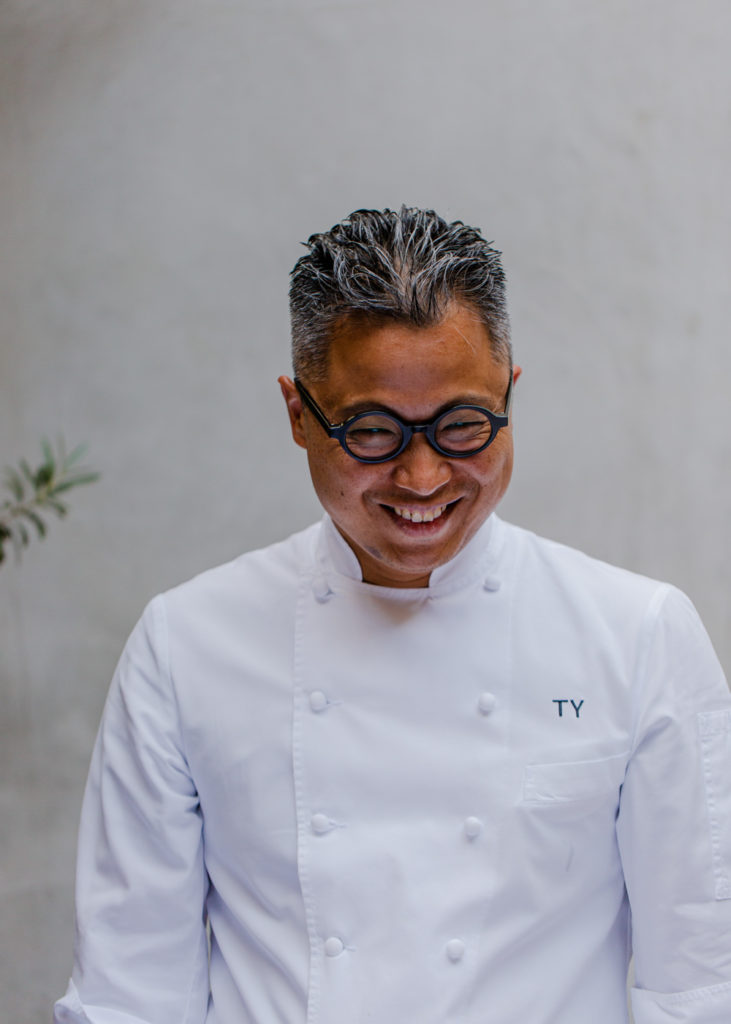
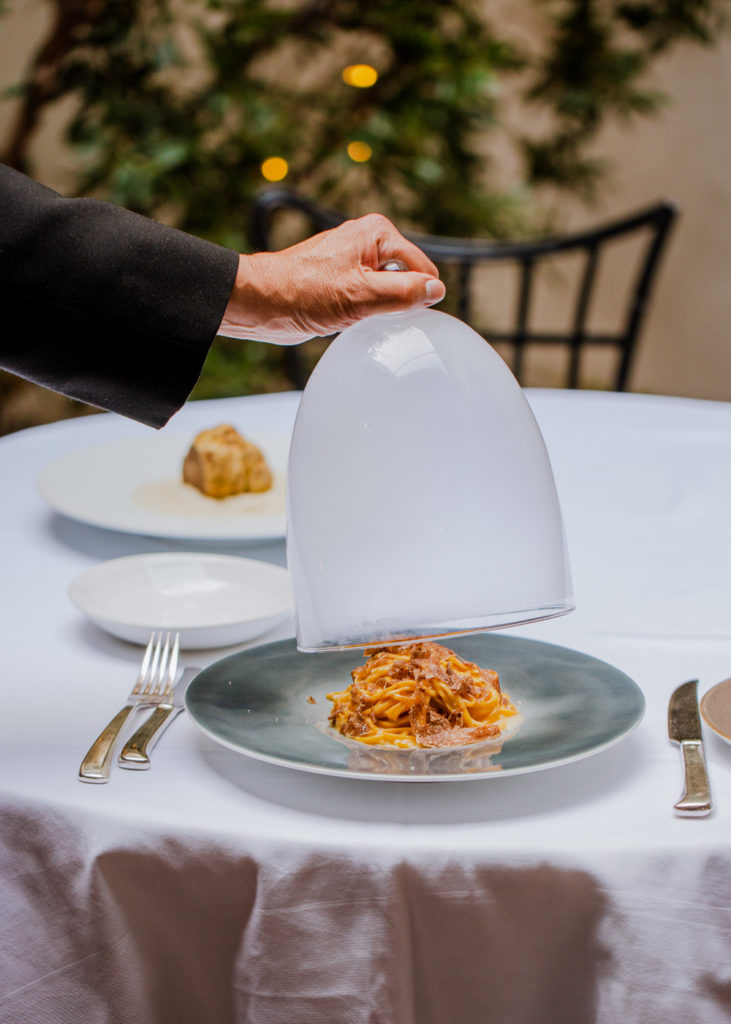
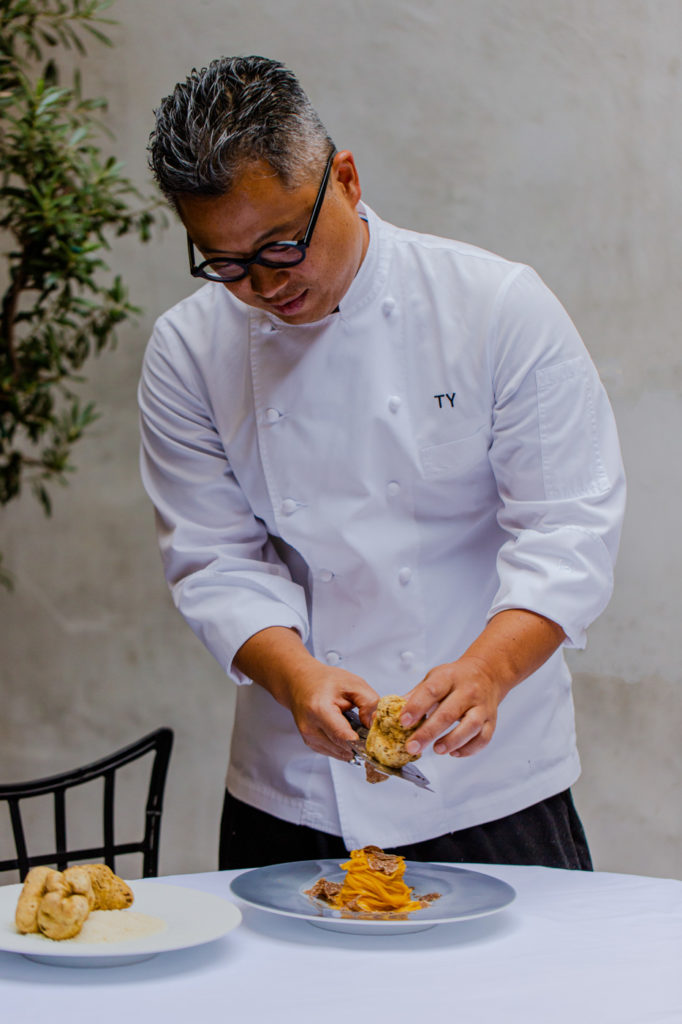

Those inherent flavors of white winter truffles are commonly paired with lean fish, pasta and eggs, Yahagi says. Black winter truffles from Europe have an aroma of cocoa nibs and roasted coffee and pair well with deeper, iron-rich flavors like those made with red wine or game birds.
And when it comes to cooking with truffles, Pietroiacovo explains that thanks to delicate flavor and price point, it’s typical that the dish be constructed around the truffle. “The truffle needs to be the king in the dish,” Pietroiacovo says.
“As much as I want to be creative, I want to respect the ingredient and the culture,” Yahagi says. However, the public perception of what dishes can appropriately showcase truffles has shifted over time. Just a few years ago, shaved truffles on sashimi or ramen would be unthinkable, Yahagi says. But chefs have increasingly broadened their horizons to include truffles in a wider array of cuisine.
The Pietroiacovo brothers have seen this evolution of various restaurants and the ingredient in its use in cuisine not typical of Italy in dishes that include uni, ramen and burgers.
“Nowadays, probably because I’m getting inspired by younger chefs doing creative things, I don’t have to be so stuck on what it needs to be or what the public thinks it needs to be,” Yahagi says.
With the success of innovative dishes and increased consumer interest in truffles, the Pietroiacovos have been able to build lives for themselves in Los Angeles, although not without steep personal cost. The brothers estimate at least $80,000 worth of truffles have been stolen en route flying from Italy to Los Angeles. The pair also lost considerable inventory their first year in business when they spoke no English and went door-to-door to various restaurants peddling truffles.
“The truffle is the stock market. You have to take a risk,” Pietroiacovo says, who still feels passionately about the trade despite the gamble.
“When I go to bed at night, I can’t wait to wake up in the morning,” he adds. “I love this business.”





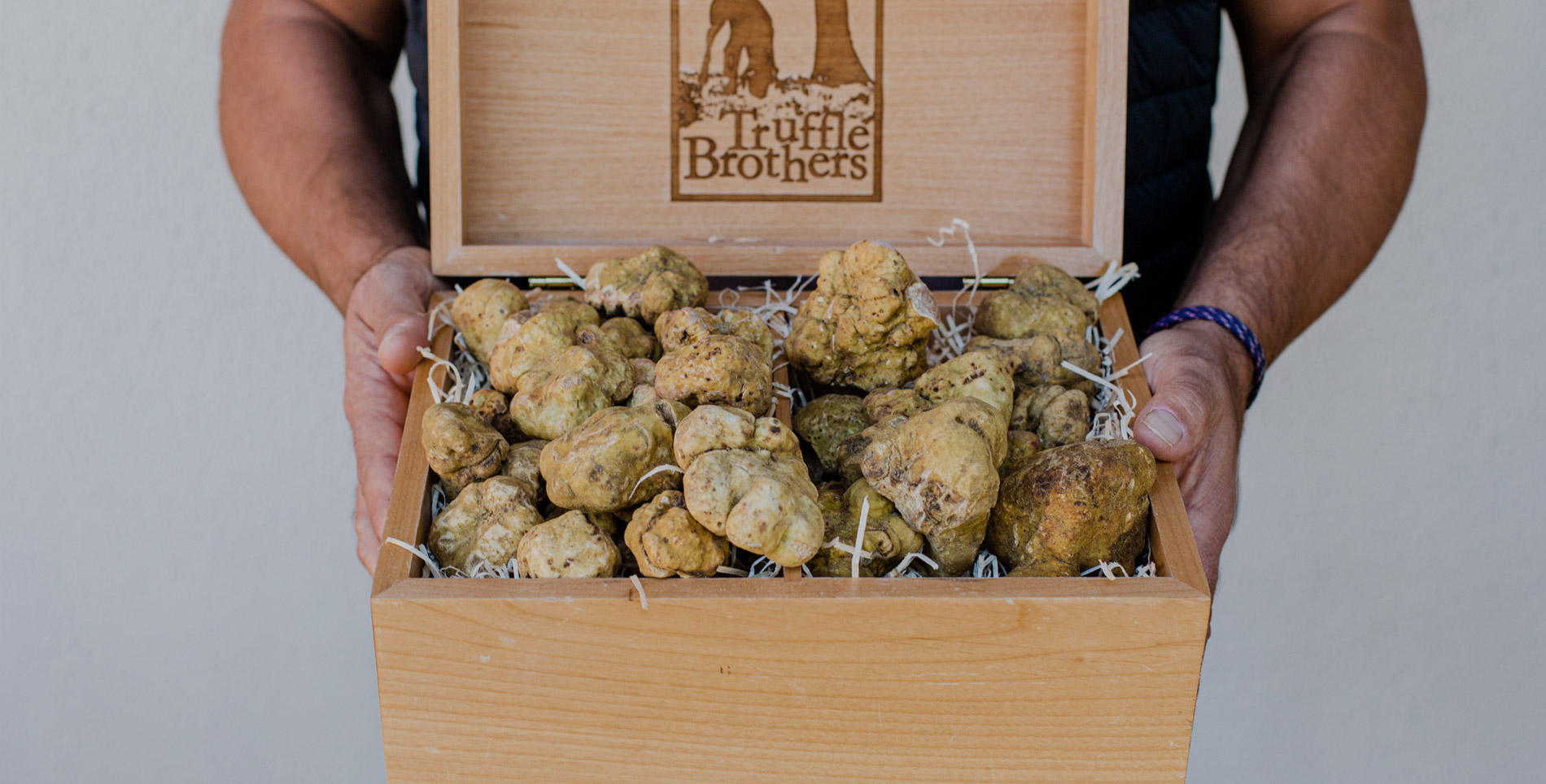

Our comments section is for members only.
Join today to gain exclusive access.